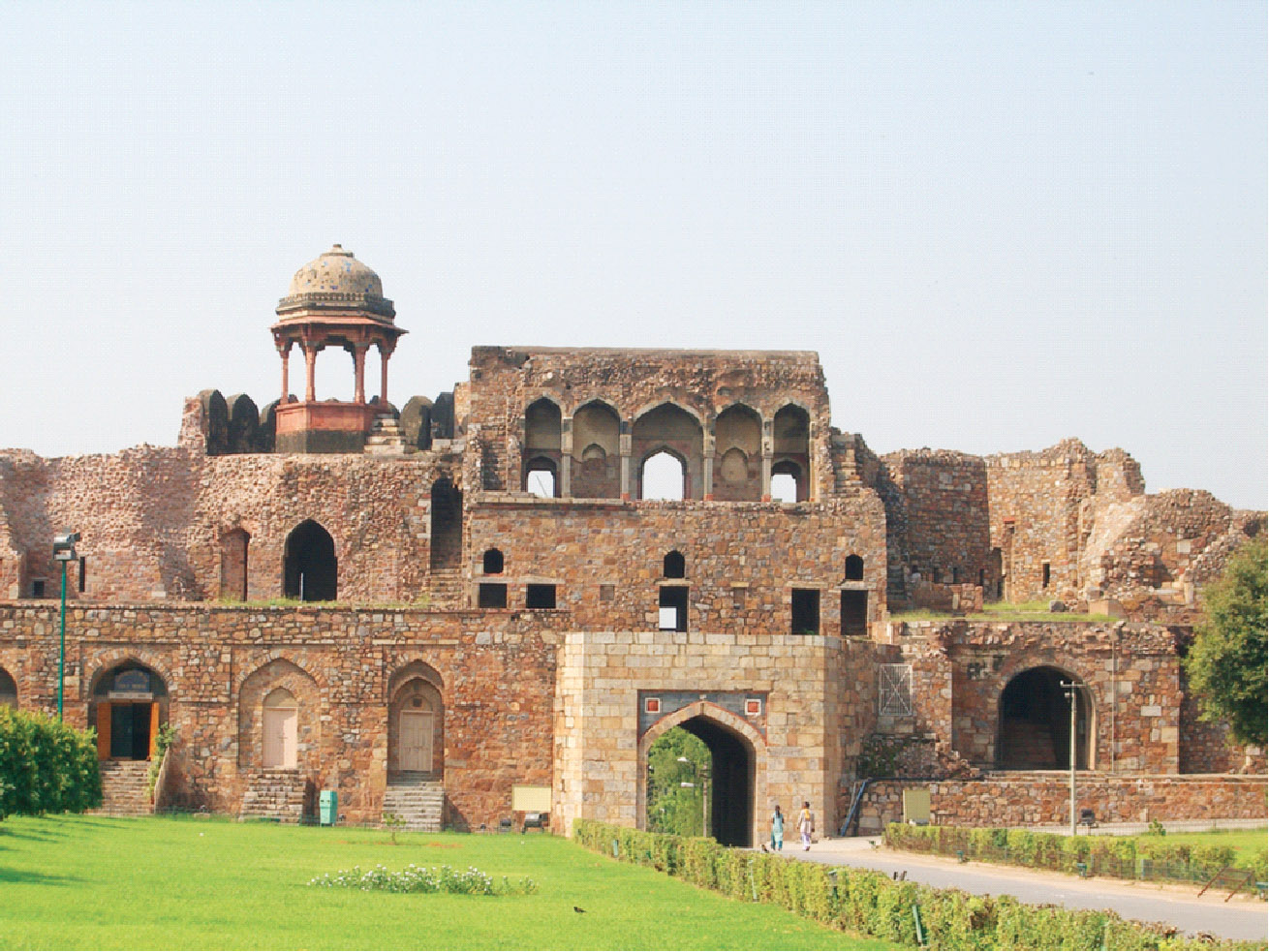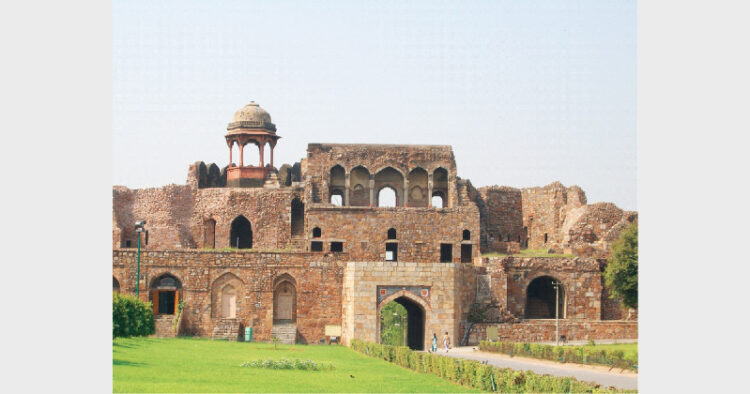 The point to ponder is not what was destroyed or taken away, but how do we undo that damage, and ensure our ‘Bharatiyata’ is restored, rekindled, and becomes a matter of pride
The point to ponder is not what was destroyed or taken away, but how do we undo that damage, and ensure our ‘Bharatiyata’ is restored, rekindled, and becomes a matter of pride
Neera Mishra
Prime Minister Sh Narendra Modi has appreciated the Congress MP Shashi Tharoor’s call to the UK to pay compensation for centuries of economic destruction that it did in India. Speaking at the Oxford Union, Shashi Tharoor had argued that Britain owed India reparations, following hundreds of years of oppressive colonial rule. He made an impassioned argument for providing India financial compensation for centuries of economic destruction that was caused during the British rule.
No matter how many such arguments are put across, neither the UK nor any other past invader would make up for the destruction caused. But these are just material damages that were done to bleed us to deprivation. More serious has been the cultural and civilisational destruction caused to us through centuries of invasions, forced subjugations and ‘colonisation of the ‘minds’, to think and accept what the foreigners wanted, or they will create
systems to paint your thoughts to look down upon the Bharatiya culture, lifestyle and civilisation achievements, and make us feel that our culture is inferior.
Britain’s Lord Macaulay served as Governor-General of India from 1828 to 1835. Which educated proud Bharatvasi does not know the famous words of this gentleman— “I have travelled across the length and breadth of India and I have not seen one person who is a beggar, who is a thief. Such wealth I have seen in this country, such high moral values, people of such calibre, that I do not think we would ever conquer this country, unless we break the very backbone of this nation, which is her spiritual and cultural heritage, and, therefore, I propose that we replace her old and ancient education system, her culture, for if the Indians think that all that is foreign and English is good and greater than their own, they will lose their self-esteem, their native self-culture and they will become what we want them, a truly dominated nation.”
The British and other colonisers of the 18th 19th and early 20th centuries openly worked on a plan, which in their own words was— “We must at present do our best to form a class who may be interpreters between us and the millions whom we govern; a class of persons, Indian in blood and colour, but English in taste, in opinions, in morals, and in intellect. To that class we may leave it to refine the vernacular dialects of the country, to enrich those dialects with terms of science borrowed from the Western nomenclature, and to render them by degrees fit vehicles for conveying knowledge to the great mass of the population,”
Looking further back in time, we realise that this was the aim of all invaders and conquerors was to destroy our highly educated, hard working and wealthy, much larger nation that we had. The matter raised by Shashi Tharoor and praised by our honourable Prime Minister drew much attention. But has anyone ever wondered how much more harm was done to our people’s understanding and outlook towards their own selves? The feudal mindset of mediaeval Bharata and ‘colored’ mindset of ‘colonial’ India exist till today. Because ‘that class’ was left behind ‘to refine’ us and and ‘with terms of science borrowed from the Western nomenclature’. How do we get ahead with ‘decolonising the minds and even hearts of a large section of our current society? The mind is the most powerful part of a human being and control of mind over emotions and matter is greater, and not so easy to undo. So any matter whether tangible or intangible will create perceptions, and gradually influence the understanding, thought, action and lifestyle. So we were influenced to believe that, ‘ghee’ is bad for health, that ‘yoga’ is a religious practice, sitting on the floor to have meals is ‘uncivilised’ though science has now proved them wrong. These were simple matters of daily life, yet critical to one’s personality. The most harmful
damage was effected in our traditional educational system. For the British, the education for Indians was merely for preparing them for doing a job well and learning ‘their’ moral values. So during the mediaeval period, our books of learning were destroyed to impose different ‘religion’ over ‘universal or Sanatan’ principles of ‘spiritual living and connect of universe’. Today the point to ponder is not what was destroyed or taken away, but how do we undo that damage, and ensure our ‘Bhartatiyata’ is restored,
rekindled, and becomes a matter of pride. The challenge is great because the foras of mass media are overpowering, and ‘controlled’.
Undoubtedly our Ministry of Ayush is doing credible work in restoring faith in our ‘ayurveda’ or science of life’ systems. Likewise, Ministry of Culture & Tourism has also initiated some note-worthy projects. But to ‘de-colonise’ the cultural understanding, the Culture and Tourism Ministries’ need to do much more, and much faster too.
The tangible has a greater impact than the intangible. Thus an immediate point to start with is to showcase the ‘Cultural Continuity’ of our nation from ancient to modern times – through exposures of archaeological evidence and findings. The best way to generate respect towards something is to show it and put systems in place to create a better understanding and appreciation for it. Exposure to ancient India, with scientific explanations of the finds, showcasing it at specific places of historical significance will instil in people a sense of pride in their historical past. Three important historical places need the attention of Ministry of Culture (ASI) and Tourism. First is Purana Qila, where most ancient cultures have already been discovered. It now only needs exposure and preservation in a controlled environment. Along with this be an interpretation centre, as there is no place at our capital city to inform us about our capitals cultural journey from most ancient times. Little is known about the pre-sultanate period, or before and why it came to be known as ‘dilli’ or Delhi.
The second important place is the Agra region, which was part of ‘Sursena’ Mahajanapada’, the capital being at Mathura. So much archaeological material of ancient times has been found but no story telling of its journey is showcased anywhere.
The third is the most powerful Maahjanapada of ancient times, the Panchala region which falls within central Uttar Pradesh. It is a region pregnant with immeasurable ancient treasures of knowledge. In fact, these were the
fertile ground for plundering and control since centuries, so have been most damaged. The colonists made much wealth from the antiquities and agricultural richness here.
An overall plan of these two ministries to showcase the cultural continuity of all important cities of our country will create awareness of the very ancient past, make the
citizens see the rich arts and culture and feel how life in tune with nature was more sustainable. The ‘itihas’ in our ancient books from all parts of India, from the ‘Rigveda’ to Puranas, the Ramayana and the Mahabharata can be a source of content for each area.
(The writer is a chairperson of Draupadi Dream Trust)














Comments